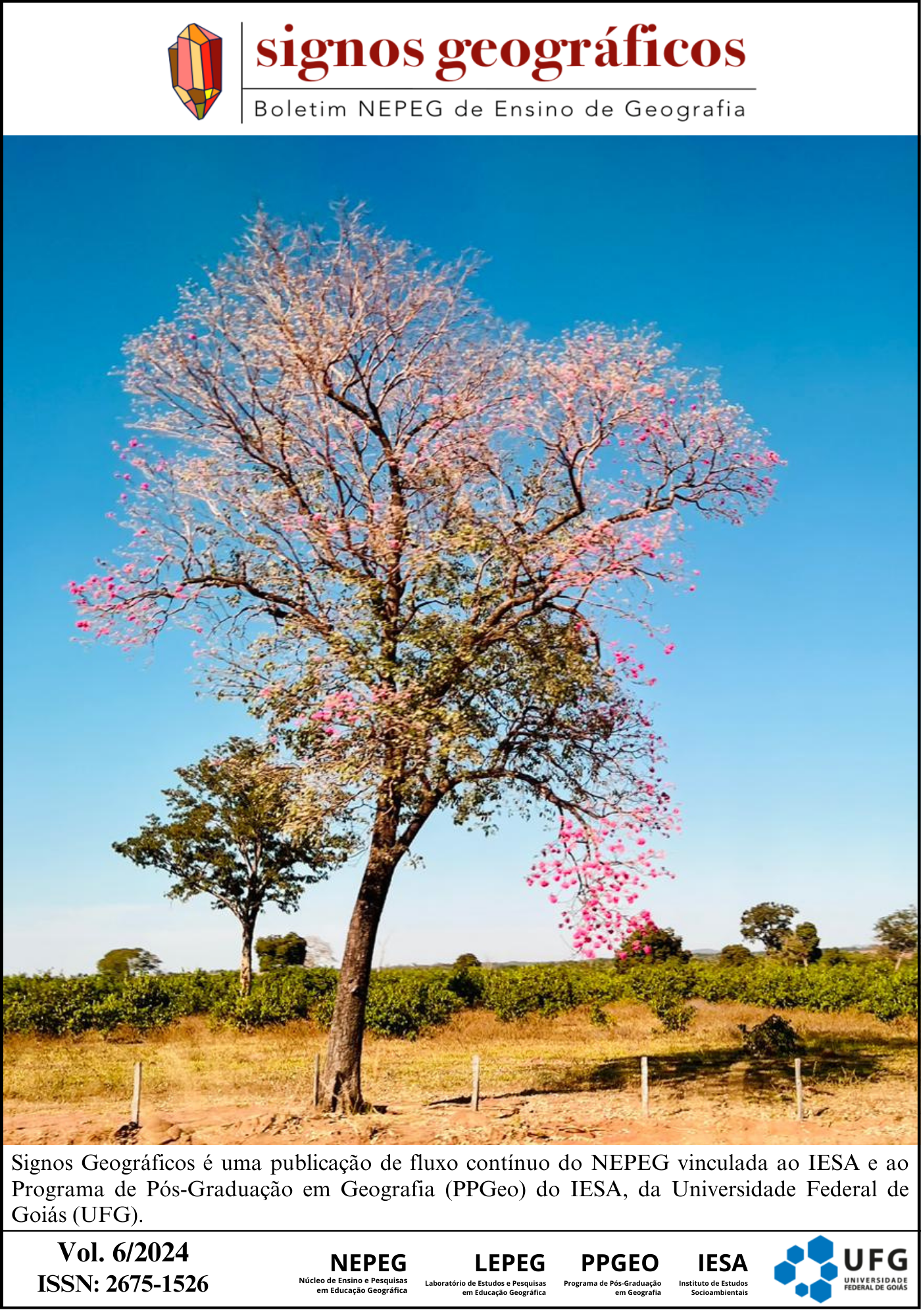A GEOGRAPHY IN MOTION: CHALLENGES AND POSSIBILITIES FOR TEACHING THE CITY FROM AN EVERYDAY PERSPECTIVE
DOI:
https://doi.org/10.5216/signos.v6.78234Keywords:
Geography Teaching, Didactic Mediation, Everyday life, cityAbstract
the purpose of this article is to present the results of a dissertation developed in the Graduate Program in Geography at the Federal University of Goiás. The concern that permeated the entire research process was directly related to the mediating role played by teachers, specifically in the context of school geography. This mediation, based on the aegis of the Historical-Cultural Theory (HCT), can help make learning about the content worked on in the classroom more meaningful because it enables the teacher to construct - and not transmit - geographical knowledge, especially when they try to relate this content to the students' daily lives. Thus, we started from the premise that the city, as geographic content and a reality experienced daily by students, has great potential for this knowledge to be constructed in a way that enables understanding of the urban space and, consequently, of the reality in which students find themselves. In order to analyze how teachers construct learning situations from this perspective, a didactic proposal was developed together with two teachers from two state schools in Goiania/GO. Considering the Region of 44 as a spatial cut-off point, since the two schools are located in the middle of it, the proposal in question was based on place as a category of geographical analysis, specifically because of its ability to relate the global and local scales, and on elements specific to THC. The results of the research showed that, in order to teach a more meaningful geography, teachers need to have a solid conceptual grasp, which in turn can be a major challenge.








